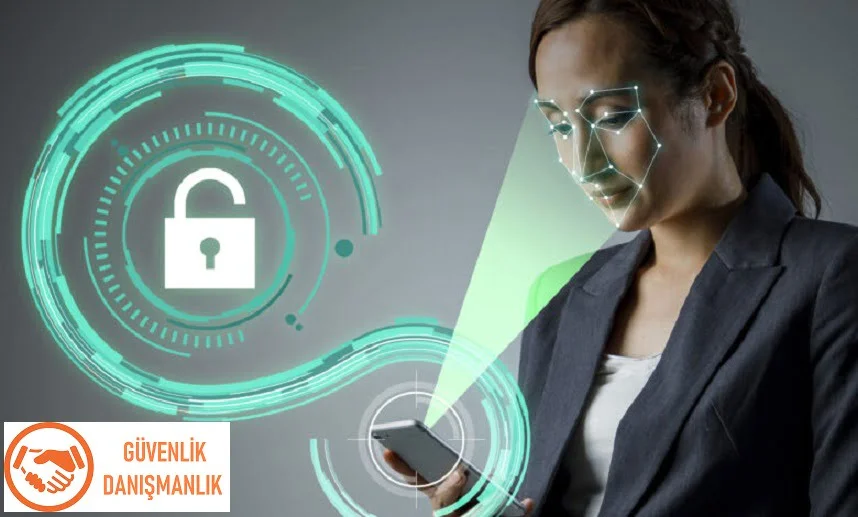Biyometric access control systems are a technology that is frequently used to increase security in recent years. These systems are used to open doors, gain access to secure areas, or use time recording systems by using body features to verify individuals’ identities. Biometric access control systems emerged as an alternative to traditional card or key systems.
Biomteric access control systems rely on an individual’s unique body features. Fingerprints, facial recognition, iris scanning, or vein recognition are used to verify a person’s identity. The data recorded from these features is stored in a database. Then, the features of registered individuals are scanned by the system and matched with records in the database. When a match is found, doors are opened or other authorized operations are performed.

Biometric access control systems are more reliable than other identity verification systems in terms of security because body features are always unique to the person without the risk of loss or forgetting, unlike other identity verification methods. Additionally, biometric scanners are effective in preventing fraud because they are difficult to replicate.
These systems can also be used as time recording systems, making workforce management easier by recording information such as when employees arrived and left work. These systems are more accurate and reliable than manual timekeeping methods.
While biometric access control systems were previously only used by large corporations and governments, they are now widely used in small businesses and even homes. These systems can be used to secure any door or area, and their flexible structures can be adapted to various use cases.

However, biometric access control systems also have some disadvantages. Firstly, the installation and operation of these systems can be quite expensive, especially in large-scale projects. Additionally, the security of the systems is dependent on factors such as the protection of records in databases. If databases are compromised or breached by malicious individuals, security vulnerabilities can arise. Furthermore, the use of some biometric features can raise concerns regarding personal privacy.
Nevertheless, these disadvantages do not prevent the use of biometric access control systems. Businesses and governments can enhance their security by using these technologies. What is important is the proper installation and management of the systems. Proper installation ensures the protection of users and personal data. Additionally, it is important to establish appropriate policies to protect user privacy and make the systems acceptable.
In conclusion, biometric access control systems are a highly effective technology for security and time management. Their development and use offer many advantages for businesses and governments. However, their disadvantages should be considered, and their use should be carefully planned.
As the use of this technology increases, legal and ethical issues become increasingly important. For example, data protection laws may restrict the use of biometric features. Additionally, there are issues with scanning and recognizing biometric features that may differ across different ethnic groups and may result in erroneous outcomes.
Biometric access control systems are designed to make people’s lives safer and easier. However, it is important to manage and use the systems properly. When properly installed, these systems provide a secure environment that enhances the security of businesses and governments. However, improper use or inadequate data protection policies can affect the reliability of the systems.
Biometric access control systems will become even more widespread and advanced in the future. It is expected that this technology will become smaller, more portable, and more cost-effective. Additionally, the use of artificial intelligence and other advanced technologies will improve the scanning and recognition capabilities of biometric features.
In conclusion, Biometric security systemss are a highly effective technology for enhancing security and time management. The proper management of the system and data protection policies will shape the future use of this technology.
Biometric access control systems are manufactured by many different brands. The use of these systems is preferred to increase the security of businesses and governments. Here are some biometric access control system brands:
- Suprema: Suprema is a Korean Biometric security systems brand that has systems capable of scanning many biometric features such as fingerprints, face, and iris recognition.
- HID Global: HID Global is an American Biometric security systems brand that produces fingerprint, face, and iris recognition systems.
- ZKTeco: ZKTeco is a Chinese Biometric security systems brand that has systems capable of scanning many biometric features such as fingerprints, face, and iris recognition.
- BioEntry: BioEntry is a South Korean Biometric security systems brand that has systems capable of scanning many biometric features such as fingerprints, face, and iris recognition.
- Anviz Global: Anviz Global is a Chinese Biometric security systems brand that produces systems capable of scanning many biometric features such as fingerprints, face, and iris recognition.
- Idemia: Idemia is a French Biometric security systems brand that produces systems capable of scanning many biometric features such as fingerprints, face, and iris recognition.
In addition to these brands, there are many different Biometric security systems brands. Businesses and governments can enhance their security by selecting a system that fits their needs and budget.






